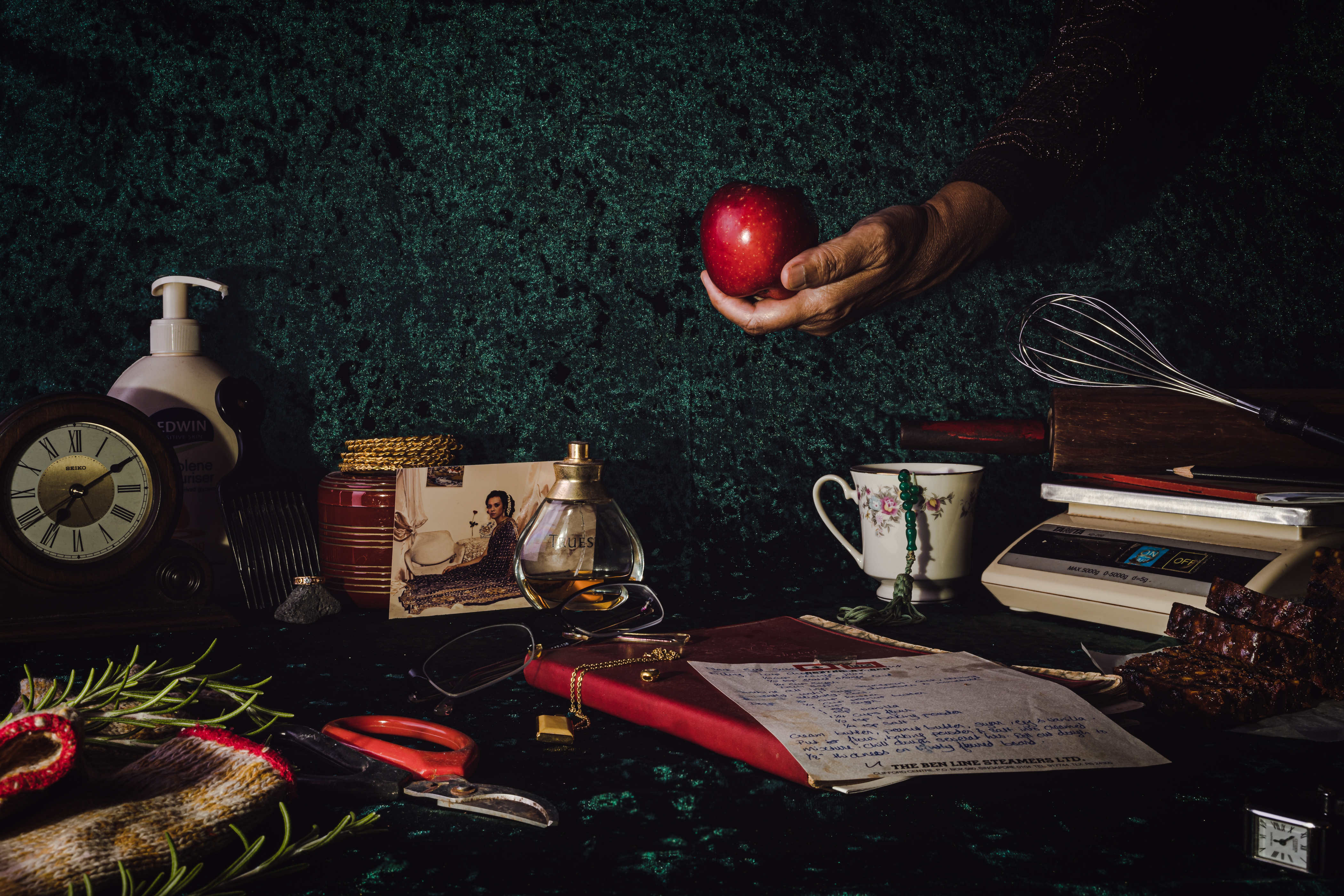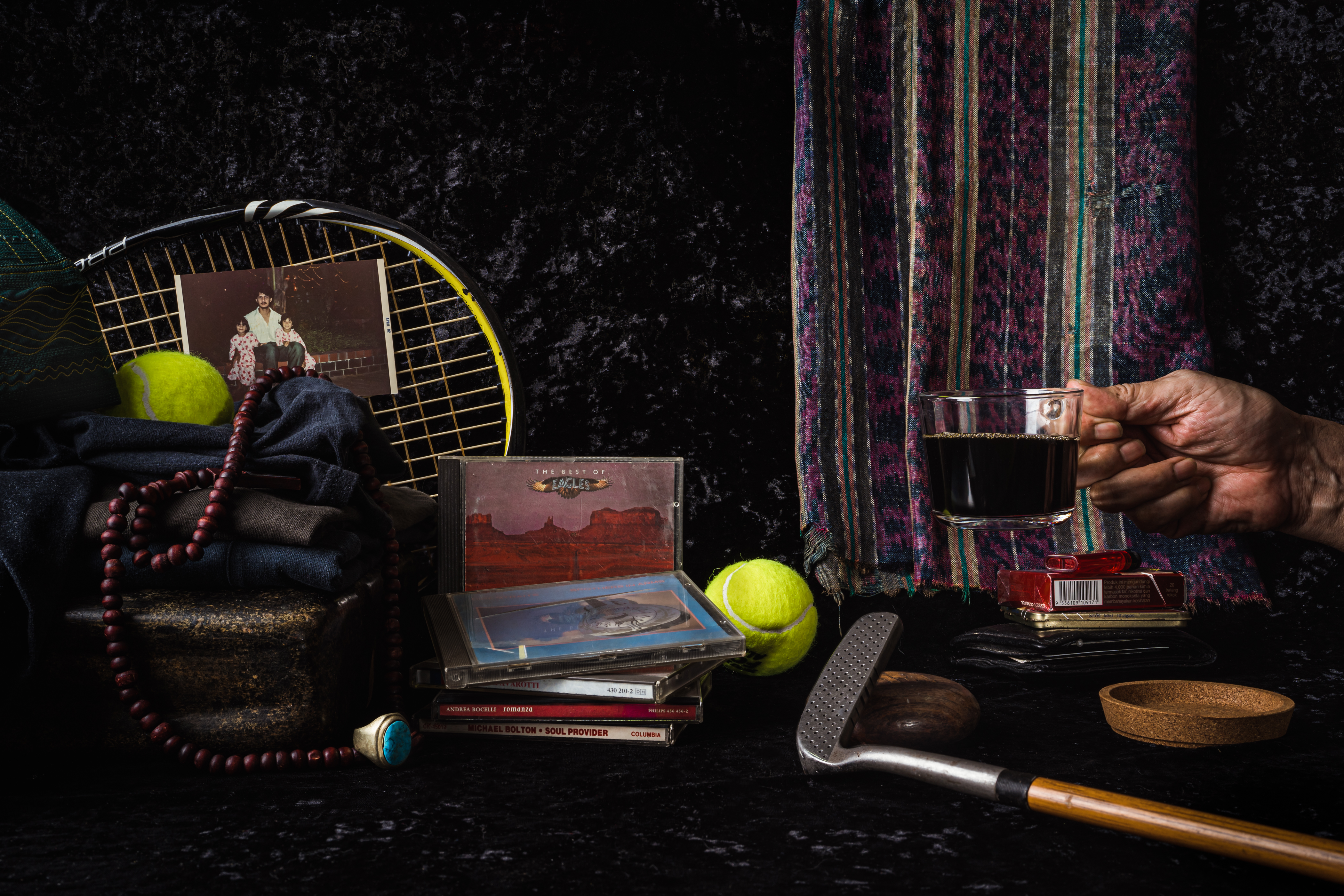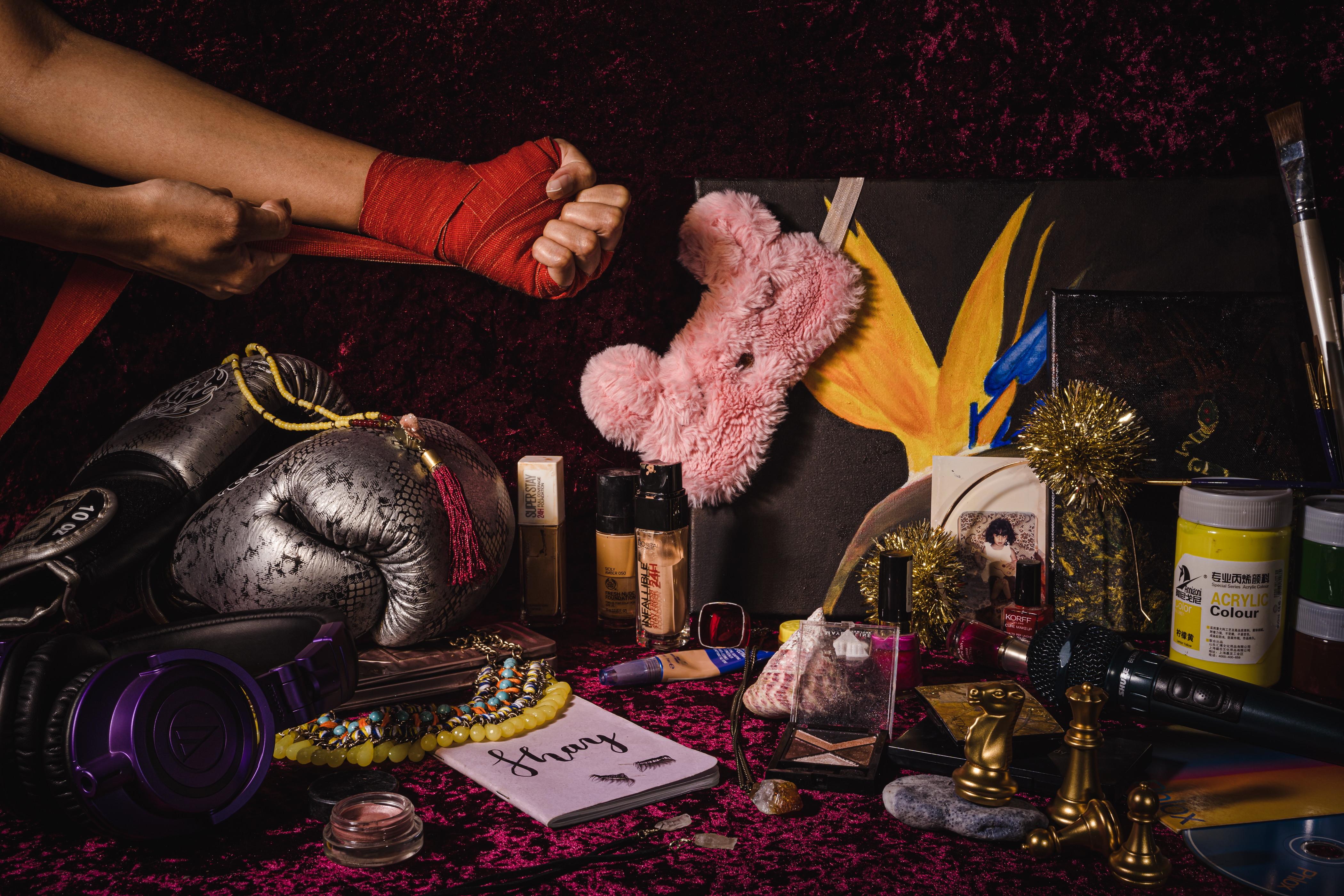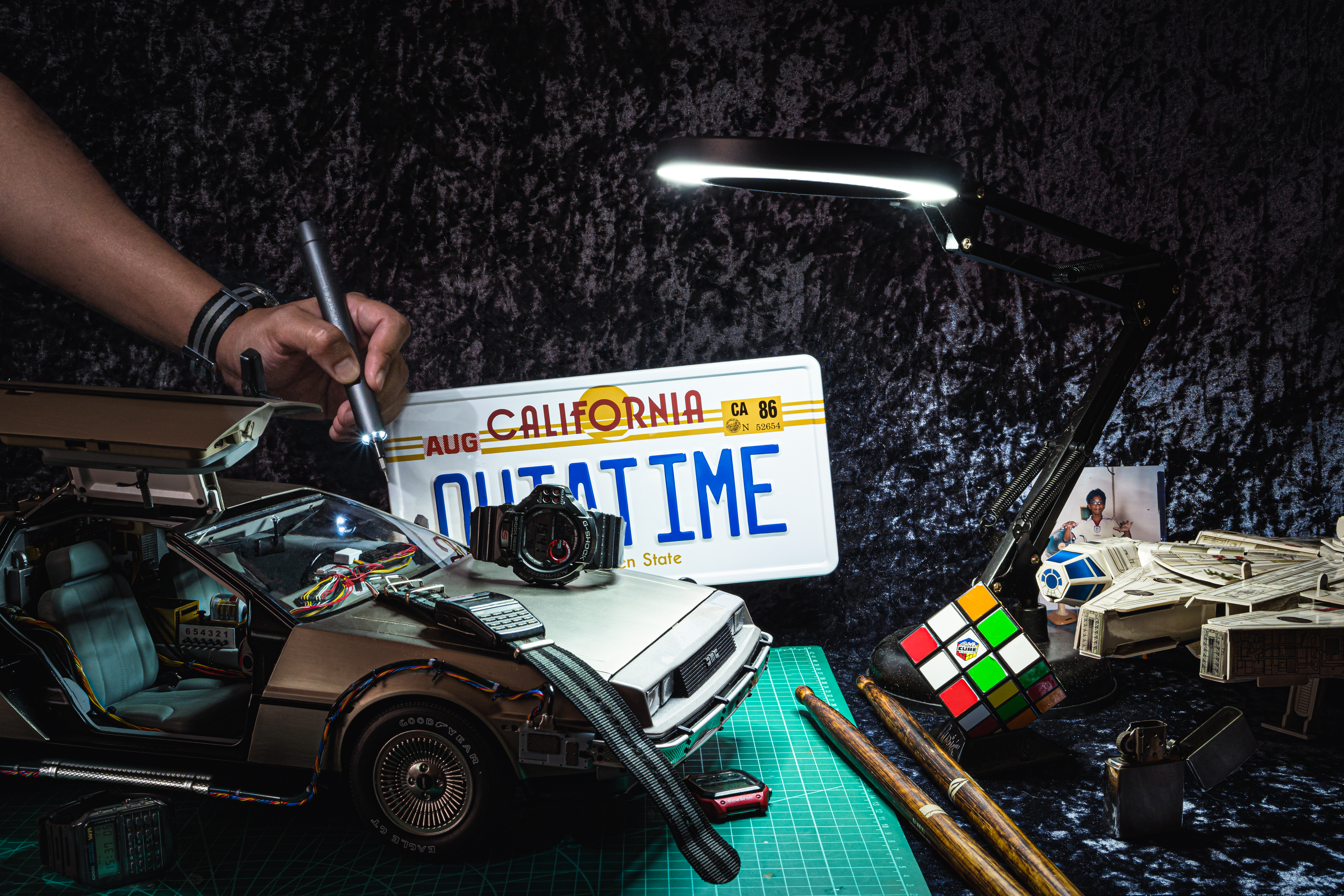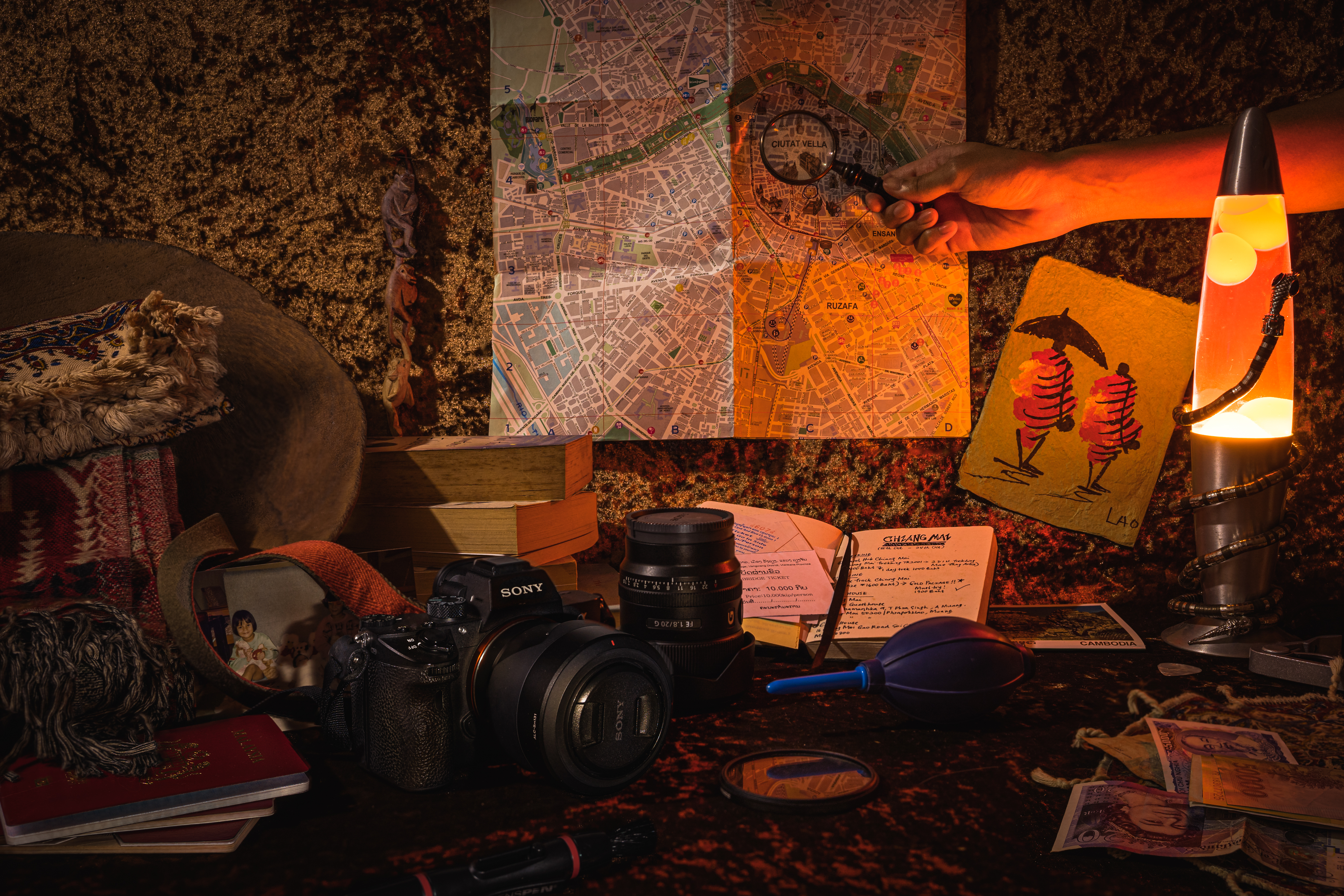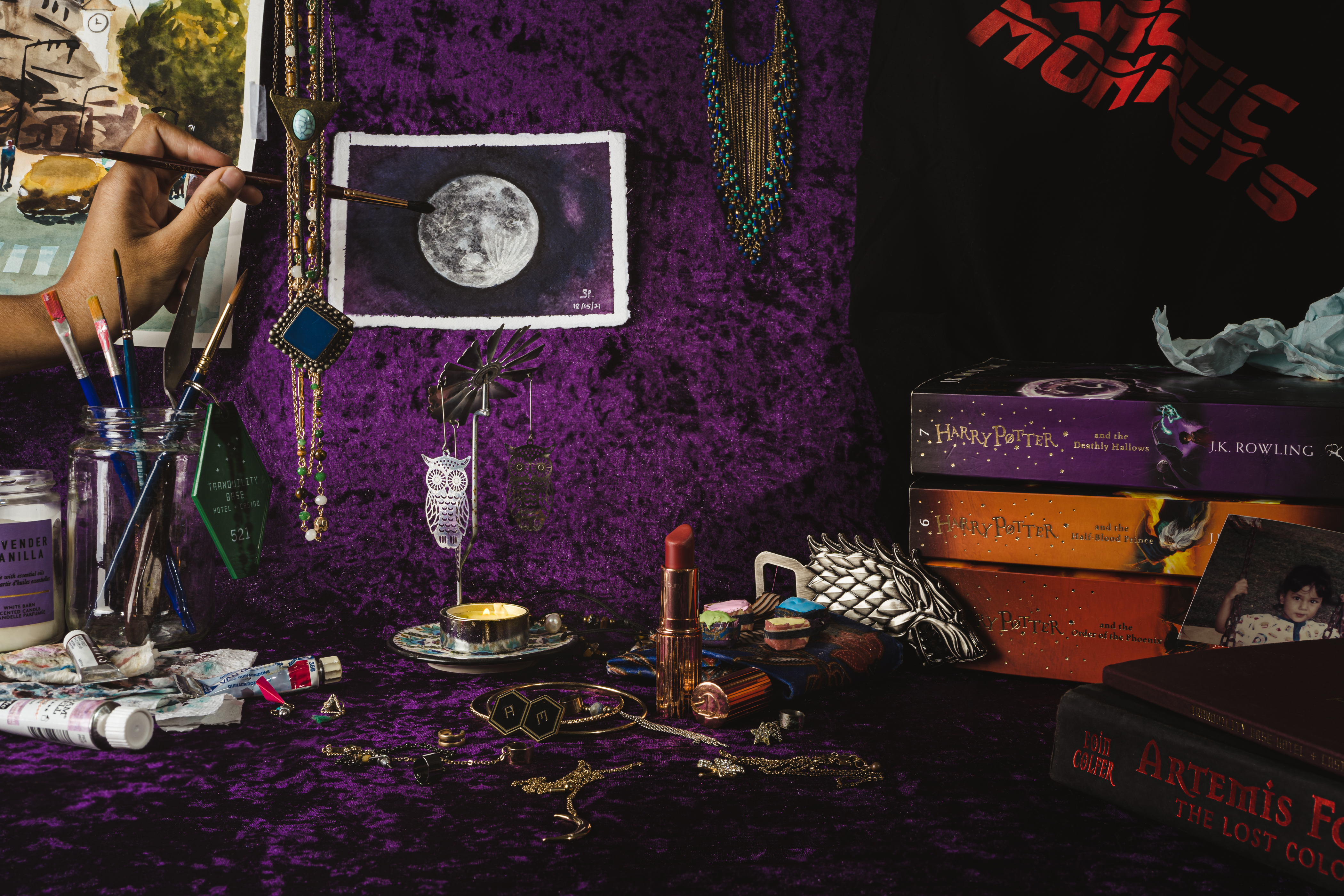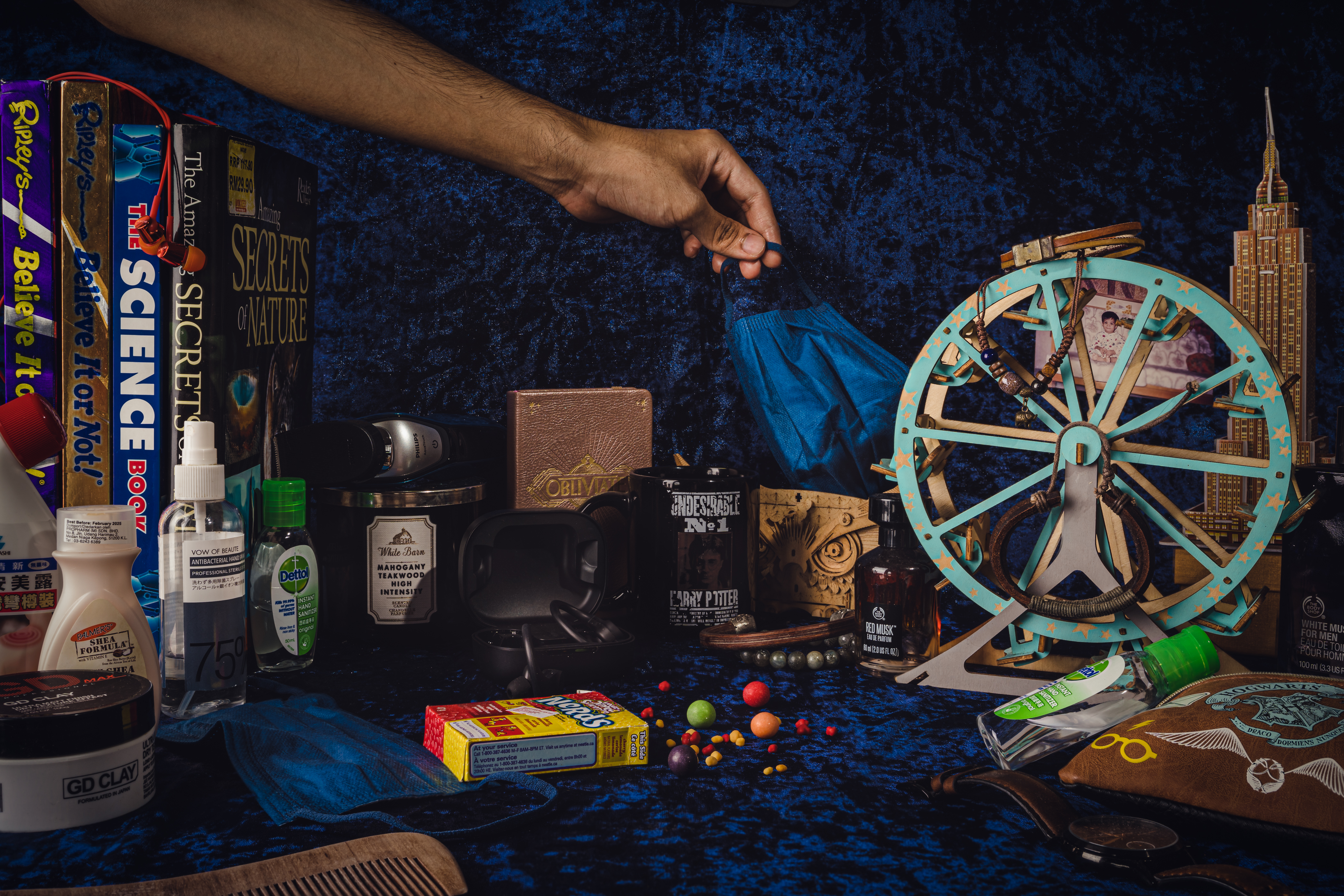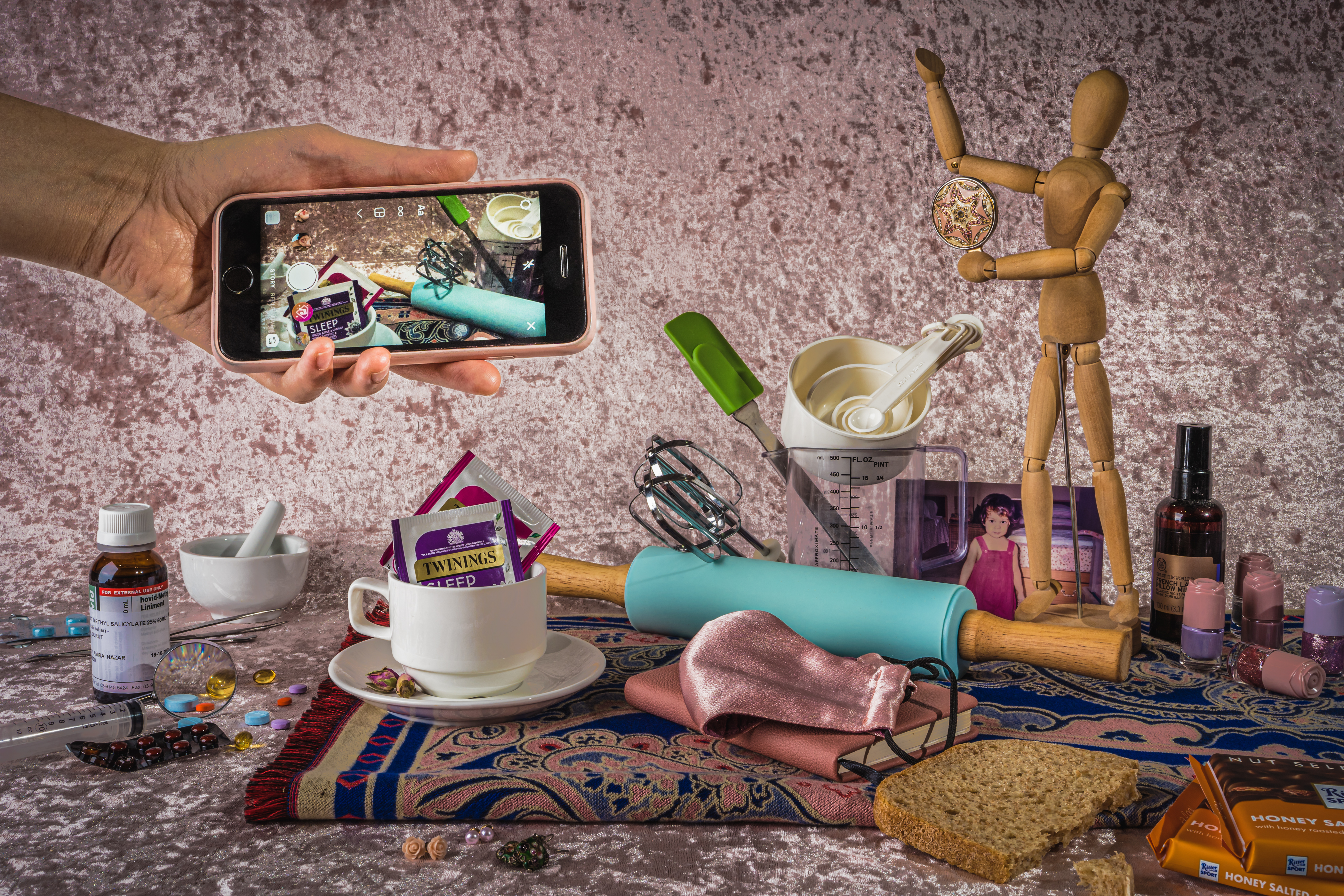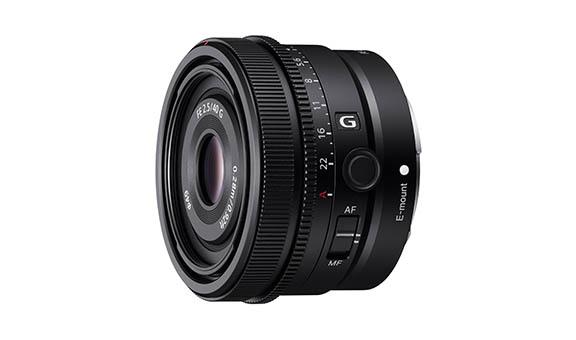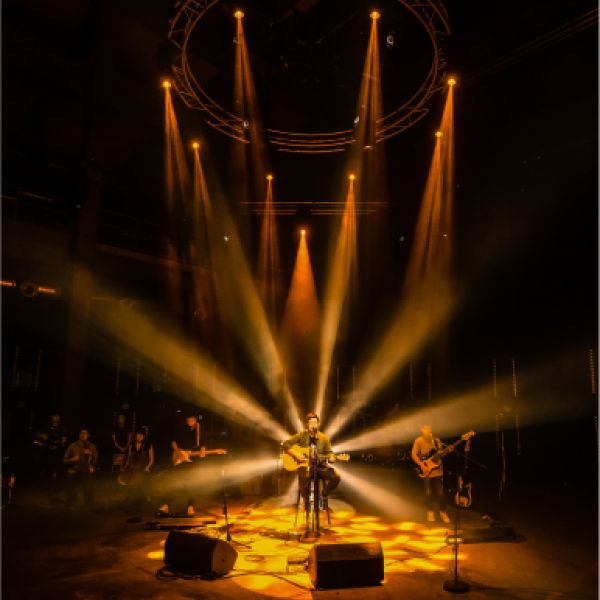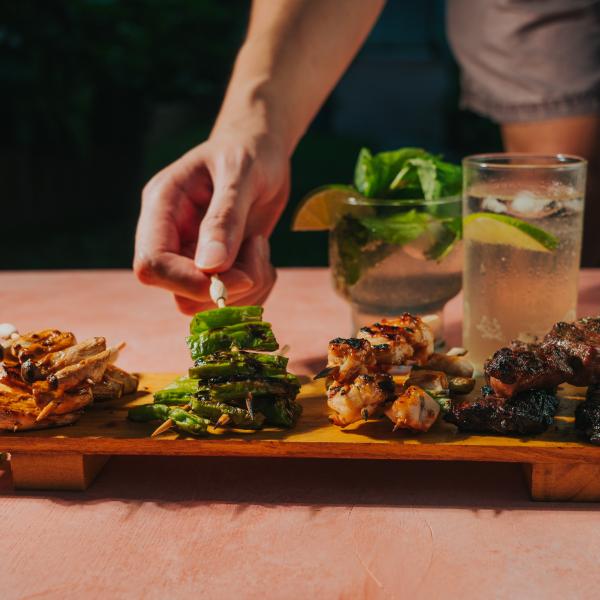The Family Archive: Breathing Life Into Inanimate Objects
Aisha Nazar’s visual series entitled The Family Archive is a still life collection that piques the minds of its viewers through its visual storytelling of kinship. With its material portraiture concept, the photo series exhibits the personal belongings of Aisha’s family that were individually collected over the years. Every image in the series highlights how possessions narrate each person’s story. In Aisha’s bid to humanise these material portraits, the viewers can observe a few recurring features. In each composition, a single hand doing a specific gesture and the carefully positioned possessions are all immediately distinctive to one family member.
In a way, the collection also serves as Aisha’s way of paying homage to her family.
The Family Archive is such a captivating take on still life photography. What is the story behind the collection?
The concept of The Family Archive involved researching and experimenting with the use of inanimate objects in photography. At the time, I was preparing for a photography project for an exhibition in Kuala Lumpur. I realized that I wanted to put a twist on and challenge what makes a portrait and a still-life image visually interesting. I decided to combine both genres of photography and presented them in a way that the viewers will relate to. With The Family Archive, I aimed to ignite thought and imagination on the way people see personal objects and how their possession says a lot about them.
The collection invites introspection on how deeply seated our psychological connection is toward our possessions.
Still life photos usually tell whole worlds of stories through one striking visual. Do you think storytelling is a crucial element of a still life photo?
As clichéd as this may sound, there is a basis for why people often say that a picture is worth a thousand words. Most photos, if not all, are accompanied by a story or a reason. To me, even a small or silly reason is a whole story on its own.
Some still life photos use symbolism to achieve visual poetry. These photos are usually standalone images, which are heavily imbued in tying objects, colours and shapes together to reach visual harmony. Meanwhile, there is also the kind that consists of a body of work, telling a timeless story under a specific theme, achieving cohesion. This creates an engaging experience for viewers.
Captioning is important in the execution as it adds the final layer to the storytelling. In The Family Archive, in addition to the family members’ character traits, I also included their occupations. I felt like their occupation makes the narrative a little more interesting and it gives additional depth to the person featured. The occupation acts as an aid to implore viewers to have an engaging dialogue with themselves and/or others on how it may or may not have a direct correlation to the curated belongings laid out. At the end of the day, this simple addition to the caption somehow gives life to the stills and offers more perspective into their personal life.
While captioning is an important aspect of extending and sharing the meaning of a still-life photo, the visuals and compositions should be powerful enough to speak for themselves.
Let’s talk about creating powerful visuals in telling a story. All elements within the photo, like composition and lighting, are immediately crucial to how the story will go. Do you have any tips on how to use these as an advantage to visual make storytelling more effective?
It took me three months to complete The Family Archive, which consists of eight images—beginning from an idea to forming a concrete concept, the photo shoot and the post-production editing. As it involved several people in my family, I had a lot of discussions with each person about how we’d curate the right image to tell their story best. All items were carefully selected beforehand to ensure that they are the possessions that best represent each family member accordingly. Right down to the colours of the fabrics chosen for the background were considered to define the unspoken aura of a person.
That said, I believe that the recipe for effective visual storytelling always begins with a plan. Planning is such an integral part of giving the creator the structure and control they need in developing a narrative. The more thought you put into your vision, the more picturesque your photos will turn out. Formulate a solid vision, understand the theme as deeply as you can, visualise your frames, consider the gears that are best for that shoot and plan your lighting.
For example, think about what lenses to use to ensure uniformity throughout the entire series, and whether artificial or natural light is best for the shoot. If it’s a natural source, it’s best to consider the time of day you will photograph and how it will set the tone of your images. It really helps to put all your ideas to paper, even if it’s just a messy sketch.
Finally, when it comes to execution, it’s important to remember that it’s perfectly alright to not get the right shot on the first try. Keep photographing, switching up the compositions and experimenting with different camera settings until you’re satisfied with the outcome.
You used the Alpha 7C and the FE 40mm F2.5 G in the collection. How did this combination help you achieve your vision?
In The Family Archive, all photographs were shot on a tripod using artificial lights. The images were underexposed to achieve the dim and mysterious ambience, and I knew the Alpha 7C could handle this perfectly. The 40mm focal range on the Alpha 7C’s full-frame sensor was perfect for delivering the concept I had in mind. Lifting the shadows in post was a breeze, thanks to its killer full-frame sensor and dynamic range, which reveals impressively retained details. For the image titled “Aisha,” which was of myself, I used the Imaging Edge mobile app to shoot remotely. That was fun! The autofocus was quick and accurate when locking onto my arm, tracking it even when it was moving.
The Alpha 7C and the FE 40mm F2.5 G dynamic duo is great for casual photography. This combination is most notable for its compact and lightweight design, making it easy for me to move around and adjust the setup. Moreover, I never have to worry about dead weight after long hours of shoots in different locations. The vari-angle screen is also a godsent feature. Since all the images were shot at waist height with a nearly perpendicular angle, the tiltable screen made checking the shots easy.
As for the lens, the FE 40mm F2.5 G focal length is versatile for any kind of photography genre. When it comes to still life photography, most photographers would opt to use either a general purpose or normal coverage lens, usually with a 50mm focal length, as it provides the closest perspective to what the human eye sees. However, with the number of personal objects needed to be captured in each frame, the FE 40mm F2.5 G gave me enough room to play with in terms of framing, while still offering minimal distortion.
How was the post-production process of the images?
The idea was to ensure all objects in the photo were tact sharp with minimal bokeh. Whereas for image quality, to avoid diffractions or image softness, I decided to avoid photographing at the smallest aperture (shooting over F16). Instead, I applied the focus stacking technique to combat this and brought multiple shots to post. Besides shooting in RAW, the full-frame sensor of the Alpha 7C makes editing underexposed images a fuss-free experience. Editing the photos did not blur small and intricate details, giving me the flexibility to apply treatments during post-production.
Experimenting is a crucial practice to improve visual storytelling through still life photography. What elements can photographers experiment with if they want to explore still life photography for the first time?
To those who want to give still life a go, start by exploring objects that are easily accessible. It doesn’t have to be complex. Look around you, it can be objects lying around in your house or garden and see where this leads you. Enrich your visions of the chosen object by thinking about the lighting, arrangements and details you want to include in your shot. Most importantly, keep experimenting with different arrangements and lighting. Lastly, get creative!
What is your advice to young and aspiring photographers today?
My advice to young and aspiring photographers—and I cannot stress this enough—is to be yourself and take the photos you love. Today with social media platforms triumphing, almost everyone is constantly creating and pushing out content, making it increasingly hard to develop and present an original idea. We’re bound to come across content we like and subconsciously imitate it.
It’s good to have a purpose you believe in to incorporate into your work, and you’ll get a sense of fulfilment from what started out as a mere aspiration. Lastly, pay no mind to validation. Taking photos and sharing them shouldn’t be about garnering likes but instead, should be seen as a form of creative self-expression.

